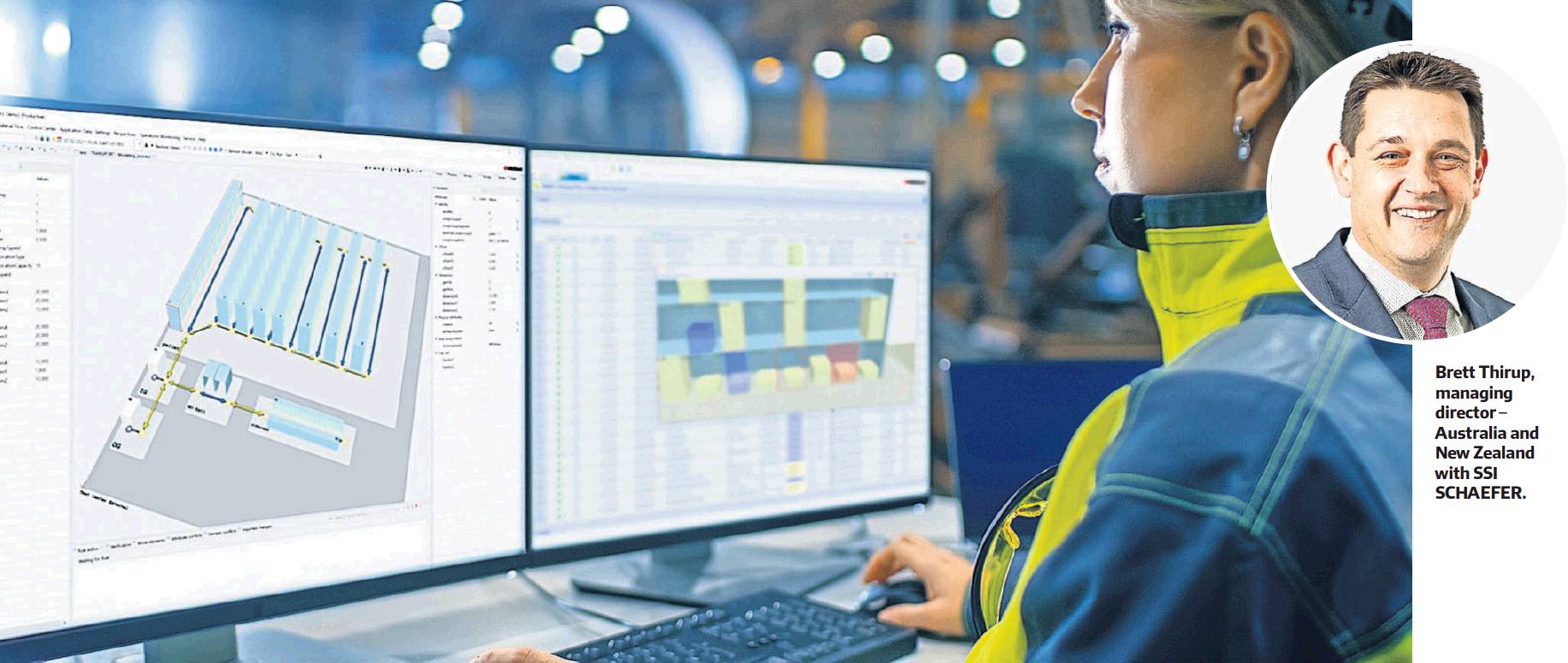Applying innovation to boost efficiency
With Australia’s e-commerce boom not subsiding to pre-pandemic levels, automation is the key for businesses looking to bolster their warehouse and logistics systems to cope with the challenges that lie ahead.
Globally, retail e-commerce sales were expected to reach $US5.7 trillion in 2022, equating to 19.7 per cent of total retail sales, according to Insider Intelligence’s Worldwide Ecommerce Forecast Update 2022 report.
Closer to home, Australia Post’s eCommerce Industry Report reveals that 19.3 per cent of local retail spend occurred online in 2021, with almost nine in 10 consumers embracing hybrid or omnichannel retail since the onset of the pandemic, according to MiQ Australia.
Even as Australians emerged from lockdown, online sales rates have remained well above pre-COVID rates. Midway through 2022, the number of online purchases in Australia was still 51 per cent higher than in pre-pandemic July 2019, according to Australia Post.
Coupled with this are more recent supply chain challenges, including shipment delays, container availability, continuing COVID-19 restrictions and political turmoil around the globe. As a result, logistics has become a key business parameter and boardroom topic that is now well-respected and prioritised.
In this most dynamic of times, business leaders are forced to consider the future sustainability of their operations and what they must do to prepare for whatever lies ahead. This includes preparing for the impact of ‘black swan’ events, such as when the 400-metre Ever Given container ship became wedged sideways in the Suez Canal for months, cutting off Europe from Asia and holding up an estimated $US9.6 billion of goods each day.
Where ‘just-in-time’ supply chain models once made sense, today businesses are forced to increase their stock holding to provide a buffer that protects against supply chain disruptions. At the same time, incorporating a level of automation and smarts into logistics and warehousing has become a mainstay of successful and adaptive operators, says Brett Thirup, managing director – Australia and New Zealand with warehouse and logistics solutions provider SSI SCHAEFER.
SSI SCHAEFER plans, designs and produces systems for new and established warehouses, developing innovative solution concepts for a wide variety of industries. It offers a full range of equipment for distribution centres and warehouses – from static pallet racking variants through to shelving for small parts storage, conveyors, automated storage, handling and picking equipment.
Increasing warehouse storage density can be an effective solution to dealing with the increased strain on supply chains, Thirup says.
‘‘One of the key issues we hear from our customers is ‘I’ve run out of room’,’’ he says. ‘‘The first step is looking for ways for them to do more with the room they have.
‘‘Operations which reach the capacity of their distribution centre earlier than planned can often immediately benefit from increasing the storage on the same premises.’’
Building on this, software can be a key factor in optimising warehouse performance and reducing supply chain complexity. With a customised software system, throughput times can be reduced and operations carried out more economically.
A warehouse management system (WMS) helps manage and intelligently execute the operations of a warehouse, distribution centre or fulfilment centre. WMS capabilities can include receiving, put-away, stock locating, inventory management, cycle counting, task interleaving, wave planning, order allocation, order picking and replenishment. It also extends to packing, shipping, labour management and automated materials handling equipment interfaces.
Efficient warehouse logistics, whether automated or manual, are only possible if the right software is used, Thirup says. This extends from monitoring and control functions to the complete coverage of logistics requirements and optimal integration into intralogistics processes and systems.
‘‘A flexible and scalable WMS, such as SSI SCHAEFER’s WAMAS, ensures an efficient flow of goods and optimised device utilisation within automated warehouse areas,’’ he says.
‘‘It links individual application components to form a coherent overall system, while providing and analysing logistics KPIs.’’
SSI SCHAEFER’s logistics software has been independently recognised as a Challenger in both the 2021 and 2022 Gartner Magic Quadrant for Warehouse Management Systems. The Fraunhofer Institute for Material Flow and Logistics has also validated the SSI SCHAEFER software. This process checked more than 3700 requirement criteria to certify that the WAMAS software has breadth and depth of functionality along with proven stability and performance.
‘‘Your WMS implementation will have flow-on effects on every aspect of your business, so it’s critical to spend the time learning about the business in order to provide a complete solution that fully meets your needs,’’ Thirup says.
‘‘The key is partnership and customisation as you can’t settle for a one-size-fits-all solution. You need a partner who will listen, learn and understand your businesses, to offer a solution that will meet your needs and objectives both today and well into the future.’’
